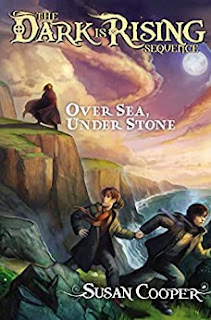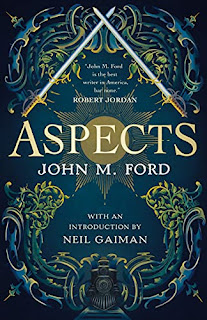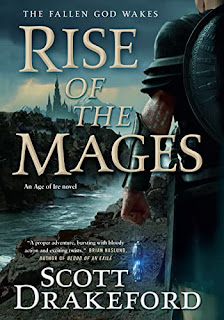Jennifer Brozek is a wordslinger and optimist, an author, media tie-in writer, an editor, and a collector of antique occult literature. She believes the best thing about being a full-time freelance publishing industry professional, is the fact that she gets to choose which 60 hours of the week she works. In-between cuddling her cats, writing, and editing, Jennifer is an active member of SFWA, HWA, and IAMTW. She keeps a tight writing and editing schedule and credits her husband with being the best sounding board ever. Visit Jennifer’s worlds at jenniferbrozek.com or on Twitter: @JenniferBrozek.
1. What book(s) are you currently reading?
I just finished Where the Drowned Girls Go by Seanan McGuire. It was fabulous. I’ve started on Kat Richardson’s Through the Grey fiction collection—savoring one story a night. I love doing that. It is a very eclectic fiction collection running the gamut from almost every part of SFF. Each morning I read a page from The Daily Stoic because I always want to keep learning.2. What upcoming book(s) are you really excited about?
Suicide Kings, book 7 of the Eric Carter series, by Stephen Blackmoore. I know I’m excited about it because I just heard about it coming out in late March 2022. When I went to pre-order it, I found out I’d already pre-ordered it back in August of 2021. I find the Eric Carter series fun and entertaining in the same way I find the Sandman Slim series from Richard Kadrey entertaining.The other book I’m looking forward to is Book of Night by Holly Black due out in May 2022. It’s got a fascinating premise and one of my new favorite names for a type of magician: Gloamist. I’m all about falling in love with a new-to-me world.
3. Is there a book you’re currently itching to re-read?
My re-read desires go in waves based on what is happening in my life. I tend to re-read the entire Dark Tower series by Stephen King once every two years or so. Ditto with The Dark is Rising series by Susan Cooper. Right now, I’m itching to re-read the Matadora series by Steve Perry. I’ve also been thinking about the Diadem series by Jo Clayton. From the feel of it, I’ve moved into a space opera want.4. A book that you love and wish that you yourself had written.
It’s got to be either The Stand by Stephen King or American Gods by Neil Gaiman. Both are basically traveling books (one apocalyptic, one urban fantasy) that explore different parts of the US with the protagonists under an immense amount of stress that make them rise to the challenge or fall hard. Both books leave the universe open for so much more storytelling and give the impression of grander things to come.5. What’s one book, which you read as a child or a young adult, that has had a lasting influence on your writing?
Without a doubt, it was The Dark is Rising by Susan Cooper. I was a lonely ten-year-old in Belgium. My world has been broken and rebuilt by the culture shock of not living in America. For the first time in my life, I really got the magic of reading. I fell into a story and imagined so much more. I also, somehow, realized in the back of my mind, I could be the one creating the story, too. Susan Cooper and that book series is the reason I am an author today.6. And speaking of that, what’s your latest book, and why is it awesome?
As an author, my latest novel is Shadowrun: Elfin Black. Elfin John is a powerful mage summoned from England to Seattle by his father. Beholden to a man he loathes, John needs to navigate the wilds of the Seattle Metroplex, doing his father’s bidding, while searching for a missing woman for his patron, an elf he admires. Ultimately, Elfin Black is a story about the ties that bind—familial ties, professional and magical ties, but most of all, the personal ties a person wraps themselves in. John must be careful what he wishes for. He just might get it.As an editor, my latest anthology is The Reinvented Heart, co-edited with Cat Rambo. What happens when emotions like love and friendship span vast distances—in space, in time, and in the heart? This anthology is filled with stories that complicate sex and gender by showing how shifting technology may affect social attitudes and practices, stories that include relationships with communities and social groups, stories that reinvent traditional romance tropes and recast them for the 21st century.
Thank you, Jenn!
POSTED BY: Paul Weimer. Ubiquitous in Shadow, but I’m just this guy, you know? @princejvstin.


















